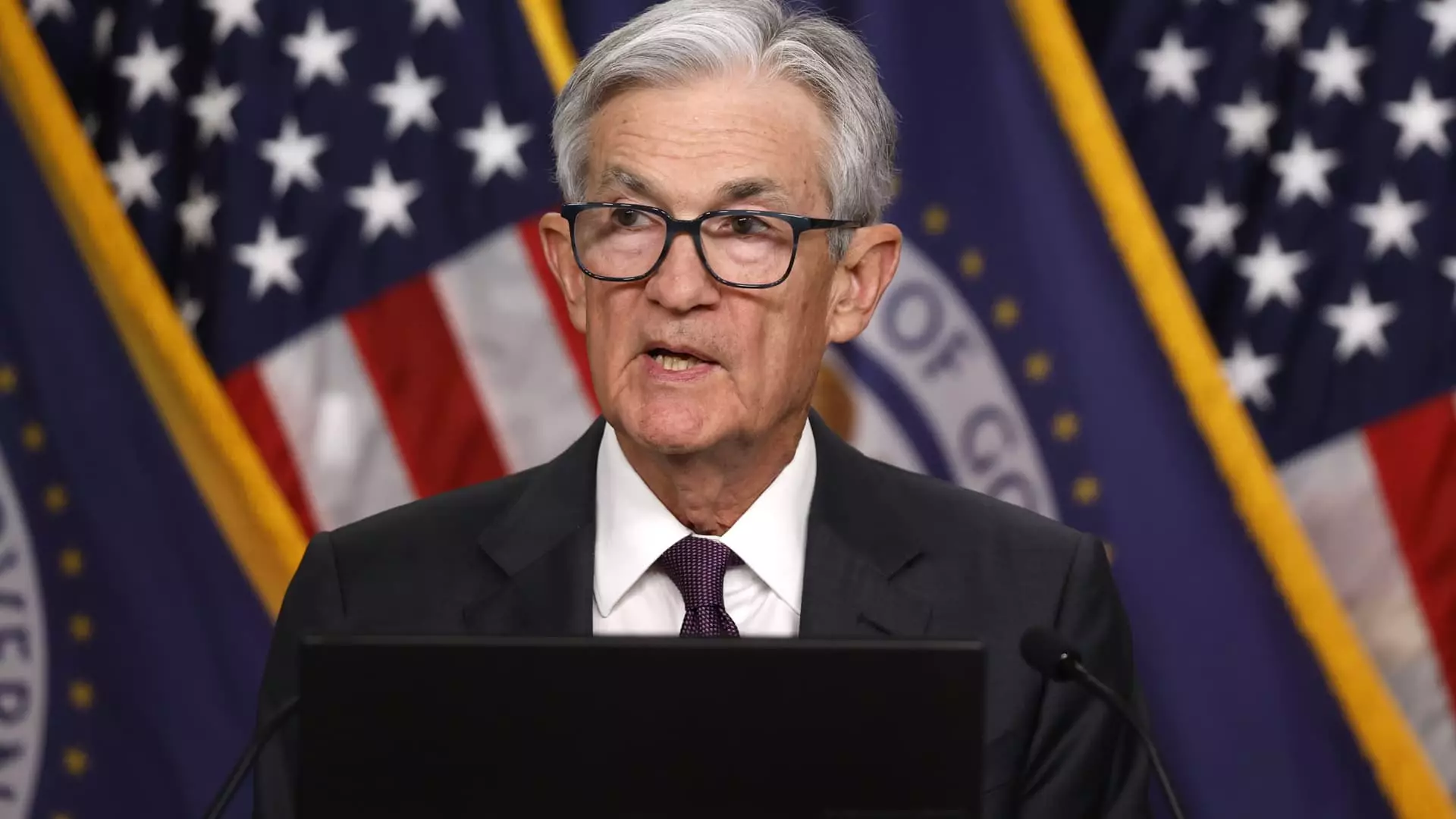In an era characterized by political turbulence and economic unpredictability, the Federal Reserve’s recent decision to maintain its key interest rate within the range of 4.25%-4.5% is emblematic of the cautious approach required in today’s turbulent landscape. The economic climate, rattled by a blend of domestic and international pressures, presents unprecedented challenges for the Fed. Although stability in the interest rate provides a temporary sigh of relief for many, it underscores a growing uncertainty that has encapsulated not only Wall Street’s best minds but also the average American worker. The Fed’s post-meeting statement admitting an increase in uncertainty regarding the economy amplifies concerns; higher inflation risks are juxtaposed against potential hikes in unemployment. This dual mandate, balancing full employment with price stability, becomes increasingly fragile amidst the ongoing complexities of trade negotiations and tariffs imploding from a contentious White House.
Tariffs and Their Stagflationary Consequences
Under President Trump’s administration, tariffs have emerged as a sword with two edges: they promise to protect domestic industries while simultaneously threatening to trigger inflation that could hinder economic growth—a formula for stagflation. The Fed’s acknowledgment of this possibility marks a significant shift in its historical trajectory, suggesting that we might be skirting perilously close to an economic scenario not seen since the 1980s. The machinations of trade wars might not merely affect the stock market; they could erode consumer trust, fuelling a strangled growth environment. Businesses are expressing alarm, with surveys suggesting heightened anxiety around supply chains and pricing strategies as uncertainty mounts. Amid this backdrop, the Fed is essentially stuck in a holding pattern, retreating into its realm of patience while the administration’s trade policies unfold with the unpredictability of a soap opera plot twist.
Economic Growth vs. Consumer Sentiment
While the Fed maintains that job growth remains steady, evidenced by the addition of 177,000 nonfarm payroll jobs in April and an unemployment rate steadfast at 4.2%, the deeper narrative hints at a crumbling façade. The broader economy exhibited a disconcerting contraction of 0.3% in the first quarter due to oscillating consumer spending and an unprecedented surge in imports, heading into the tariff storm. Although projections for the second quarter lean towards a recovery, these economic indicators reflect a cautionary tale rather than a tale of triumph. Consumer and business sentiment is simultaneously clouded by anxiety; any optimism is tempered by reality as households grapple with rising living costs due to impending tariff-induced inflation. The nuances of the economy present a complex tableau that belies the simplicity of raw job numbers or GDP percentages.
The Fed’s Standing—A Unanimous Decision Amid Inner Turmoil
At its recent meeting, the Federal Open Market Committee’s unanimous decision to leave rates unchanged signifies not just a strategic pause but an acknowledgment of the systemic risks lurking beneath the surface. Amid the widespread speculation that rate cuts may be on the horizon—market pricing suggested a less than 30% probability of cuts soon—traders remain in the dark, uncertain of the journey ahead. The variable nature of market expectations makes the task of navigating monetary policy even more convoluted. As traders oscillate in their predictions regarding forthcoming rate cuts, one must recognize that the Fed is not merely a passive observer in this economic drama but a player attempting to mitigate fallout in a rapidly changing world.
California Dreamin’: The Impact Beyond the Beltway
The ramifications of the Fed’s moves—or lack thereof—extend beyond the financial capital of Washington, D.C., rippling across the nation. While the Fed may tout a solid pace of economic expansion, for everyday individuals—especially those residing in economically challenged states—this characterization rings hollow. Many Americans struggle under a mountain of debt, with mortgages, auto loans, and credit card bills that often surpass their inflating salaries. As the Fed deliberates policies that appear centered on financial markets, the lived experiences of countless citizens remain in the shadows. The trade war’s implications, articulated through higher prices and potentially job losses, create an everyday reality starkly removed from the metrics that policymakers often lean on to justify their decisions.
In sum, the Federal Reserve stands at a precarious juncture, tasked with mastering an intricate balancing act amid uncertainty. As it weighs its dual mandate, the stakes for everyday Americans have never been higher; the Fed’s choices will continue to shape the economic environment, one rate announcement at a time.


Leave a Reply